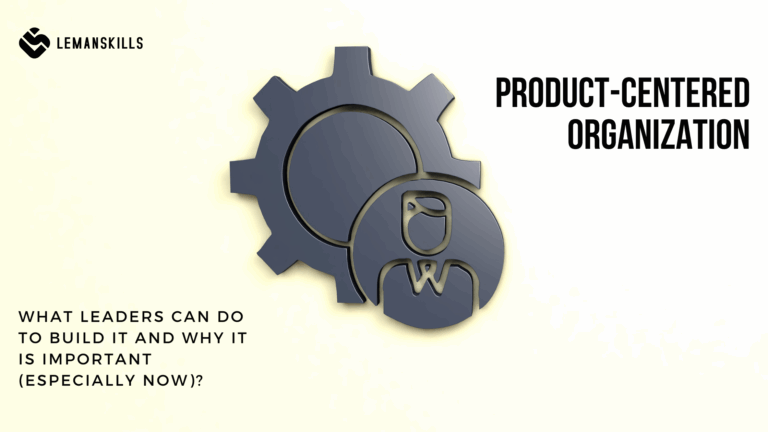In the previous article, I’ve started the story about “I don’t have time” excuse. I got inspired by a structure that we can make around this excuse, and how many areas of our live it might influence, making us thoughtless and unhappy at the end of the day. In this article, we are going to get on the record one of the most difficult and important things there are regarding getting our time back – saying “no” to things.
It’s crucial for us, as people, employees, partners, parents or friends to set healthy boundaries, with a good intention to ourselves and the world that is around us. Might seems easy, but believe me that a lot of people are struggling with this every single day.
Do you want to know how to do it and don’t feel guilty?
How saying “no” to things at work can help?
It is a natural instinct that tells us to stay in the group at work, it has its roots in history and biology and it comes from our need to survive and not be eaten by a tiger.
So we stick together, and when somebody is asking us for supporting them in their tasks, or give us a task to cover that is totally crushing our plan for the day (especially if this person is our manager or somebody even higher in the hierarchy), we stop doing what we were doing, and jump right into the new assignment.
Sounds familiar?
We just want other people to like us, we want to be seen as reliable, helpful individuals, and it’s natural. But with what cost? The cost is being behind with our own tasks or projects, working extra hours to fill everything out, feeling frustrated that another day brought the same scenario – we planned everything, and it ended like always. Ruined. I’m not surprised when people who I teach about making a structure around their day to focus their energy on the right things, are saying to me: “Alex, it’s not working for me. I can plan my day, but then my manager/board member/colleague from my team comes to me and give me something that is urgent and what needs to be done ASAP”. And they agree to do it. Because they don’t want to be seen as lazy, not supportive, selfish, inflexible.
Setting boundaries at work is a real skill and its goal is to protect our time from other people who wants to get their job done, using our skills, readiness to help and ability to do things efficiently and effectively.
If somebody comes to you or sends you something that requires an investment of your time and focus (even if it’s just 5 minutes), take a step back before you dive into doing it. Ask yourself: “Is it my job to do it? Is it that important for the organization that I should resign from what I do and do this instead? Is it that urgent that I should do it now?”. You can use your own examples, but remember to always stay in OK-OK position, with a good intention.
What people are most afraid of is if they start setting the boundaries and protect themselves, other people will stop liking them, or coming to them when they need help. It’s not true. Keeping the good intention, clear communication about the division of responsibilities and clear timeline is a main key to avoid conflicts, misunderstanding and to build equality in treating each other’s time and skills.
How saying “no” to things at home can help?
It’s different from country to country, from culture to culture how we are functioning at our homes. In some cultures, with more patriarchal touch, traditional, conservative way of living is when women are staying at home, raising children and taking care of everything what’s connected to the “house”, without ever saying “no” to anything. They also take care of older members of the family, while men are supposed to earn money and bring it to them. Nowadays it’s changing, but – taking as an example Poland, my country of birth and living at the moment, the beliefs and convictions about the “classical” roles of men and women in the society are really deeply rooted.
And based on that, we often have beliefs and convictions in our heads about what we SHOULD do or who SHOULD we be in a certain context. It is connected to the conservative and post conservative thinking mindset, but even if we are in post conservative stage, we often have strong second thoughts about how we should set boundaries at our homes. And statistically, more of those tasks are on the women’s shoulders, so we have more troubles with saying “no” to things, not agreeing to do something what should be “natural” to us.
But it’s not about what we SHOULD do. It’s about what we want to do, and what we want to share with others, as we live together, and maybe what to withdraw completely to not thinking about it and focus on that really matter to us.
Make a list of things that you do at home at the moment. It can be connected to the cleaning, cooking, shopping for groceries, taking care of pets or kids. You name it, it’s your list. Ask people in your house to do the same things, include the children if you want. If you live alone, do it as well. Then, underline those things that are crucial to you, that are the closest to your heart and you would never let them go. See what is left on the list. Decide what to do with those items – how to share responsibilities with other people in your house or maybe take someone from the outside to help, if you can afford it? What I’m sure you cannot afford is to do everything on your own and not ask for support.
I know asking for help for some of us is one of the most difficult things to do, since a lot of us think that when we do it, we seem weak, that we cannot manage everything perfectly on our own. No matter what the cost is and how exhausted we are. But in my point of view, NOT ASKING is a weakness, jamming emotions and frustrations is a weakness, pretending that everything is fine is a weakness. And all this has an influence on people around us as well – think about it next time when you will want to say that you don’t need any help, or say “yes” to another thing, instead of saying “no” to protect your time.
How saying “no” to things in relations with other people can help?
There is a construct in Transactional Analysis called “drivers”.
Drivers in this context are internal injunctions, orders that work in such a way that we feel an internal compulsion or powerlessness to stop doing something, for example being nice to other people no matter what. Those convictions were made in our brains mostly until the age of six, based on what we have heard mostly from our parents or other people who raised us, unconsciously building our view of ourselves and the world that is around us. If a girl heard that she needs to be nice, quiet and to smile to other people, she will probably do it in her adult live and saying “no” to other people will be hard for her. If a boy heard that he needs to be tough and not cry like a girl, he will probably have a belief in his adult life that the tears are signs of weakness and will despise people who show such reactions. That’s how the convictions are born.
There are 5 drivers in TA, but in this article one of them is particularly useful, so we are going to focus on that.
“Please People” as a driver is there when you please others without asking if they actually need it, using intuition to guess other peoples’ needs. “People Pleasers” will avoid hurting others, that’s why they won’t say directly that they disagree with something, unwillingly undermine different ideas or orders they get. They put the needs of others over their own – that’s why other people think that they are always there for them, no matter what. They are seen as great team members because they are super helpful, always ready to support the team, even if they need to stay late, over and over again.
Saying “no” for those who has strong “Please People” driver inside of them is really hard because they live to help others. But that way – they are mostly tired, frustrated, burned out and sometimes depressed, since they don’t see in themselves any value, they are never enough in their eyes. If it’s your case, take into consideration that you are enough, and your needs are equally important compared to other people. You need to take care of yourself first, before starting taking care of others – only that way it can work.
Choose one thing you are going to say “no” to today in the context of other people. Remember about a good intention, a need of protecting yourself and repeat to yourself that it’s not selfish. It’s selfcare. Say calmly that you are hearing that something is important for this person, but you just don’t have a capacity to take care of that. Ask “how we can divide this between us to complete it together?”, instead of agreeing to take care of the whole thing. For a lot of people, it’ll be a groundbreaking event. Try it. See how you feel. Do it one more time tomorrow.
The bottom line
Saying “no” to things, to other people or to comfortable habits might seem impossible at the very beginning. But if we want to be better, make smarter decisions, live better lives, we need to do what’s uncomfortable, to challenge status quo. If you want it, ask yourself “why am I not saying ‘no’ to the things that I really don’t want to do?” It’s always a good start to make a real change, without feeling guilty.
Shall we?




